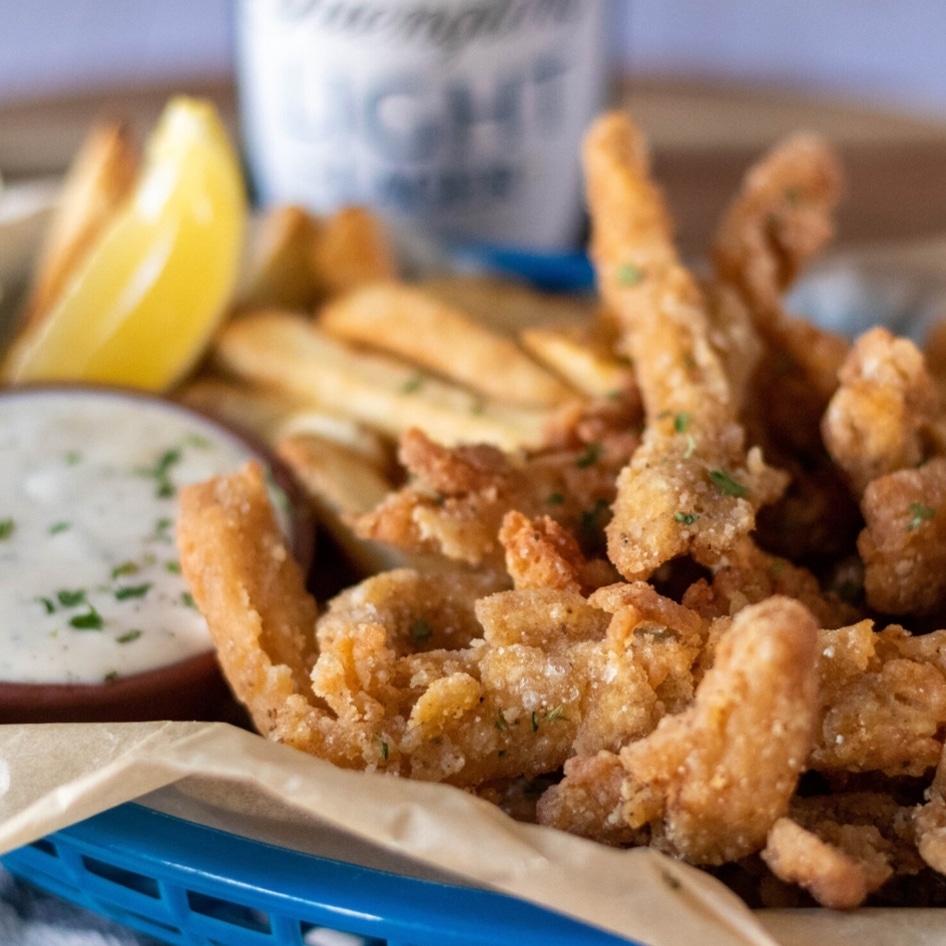Two million years ago, historians believe that some of humanity’s earliest ancestors sat by one of Kenya’s ancient waterways and ate catfish. This species, still widely consumed today, is incredibly common. In fact, you can find them in the surrounding waters of every continent (Antarctica excluded). But research suggests that perhaps it’s a smart idea to leave them be. And no, it’s not about overfishing, fish sentience, or plastic pollution (which are also valid reasons to stop eating fish). Instead, the study looked at PFAS, aka “forever” chemicals.
PFAS have permeated many parts of our day-to-day existence. They have been found in clothing, carpets, upholstery, popcorn bags, shampoo, grease-proof paper, and, recently, meat and fish, too. But despite how widespread they are, studies indicate these chemicals are far from good for us. In fact, they may be a big risk to our health and the environment. Here’s why it’s time to be wary of foods that contain PFAS, including freshwater fish. But first, what actually are PFAS?
What are PFAS chemicals?
Thousands of industrial chemicals fall under the category PFAS, which stands for per- and poly-fluoroalkyl substances. In many contexts, they’re extremely helpful. They’re water- and stain-resistant, so they help to create water-repellent clothing, for example, and nonstick cooking pans. But while they are useful, PFAS become considerably less appealing when you look at the impact they could be having on human health.
According to the National Institute of Environmental Health Sciences—which is conducting ongoing studies into PFAS—right now, research “reveals possible links between humans exposures to PFAS and adverse health outcomes.” The latter includes fertility issues, reduced fetal growth, a higher risk of some cancers, and impaired immune systems.
 Unsplash
Unsplash
Why are PFAS called forever chemicals?
Not only are PFAS a risk to humans, but they’re also an environmental menace. They have earned the nickname “forever chemicals,” because, quite simply, once they enter the environment, they don’t biodegrade or disappear.
“Once released in the environment, [such as] during manufacturing or leaching from a consumer product, PFAS tend to migrate in the water and remain intact for very long periods of time,” notes chemical-focused nonprofit Chem Trust. “This allows them to be transported over long distances. PFAS have been found in the environment all around the world, even in the most remote areas such as the Arctic.”
In the Arctic, PFAS tend to get trapped inside the ice. But as the ice melts (which now happens more often due to rising temperatures) the PFAS are released back into the ocean at more concentrated levels, which has major consequences for the health of the water.
“The changing nature of sea ice, with earlier and erratic periods of thaw, could be altering the processing and release of pollutants alongside key nutrients, which in turn affects biota at the base of the marine food web,” said environmental chemist Crispin Halsall, who led research into PFAS in the Arctic in 2021.
Are there toxic PFAS in freshwater fish?
With PFAS contaminating the oceans, it stands to reason that fish would be impacted, too. And, following a new analysis, the Environmental Working Group (EWG) has confirmed that wild-caught, freshwater fish are contaminated with toxic PFAS.
In fact, it stated that eating just one serving of freshwater fish in the US could be the same as drinking highly contaminated water every day for one whole month. The most affected fish? Catfish, alongside species of bass. It also noted that fish caught near urban areas had the worst levels of PFAS.
It’s not the first study to suggest that locally-caught fish contain high amounts of PFAS. In March 2022, the New York State Department of Health suggested that the reason Burmese refugees in Syracuse had high levels of PFAS in their blood was that they had been eating locally caught fish.
 Unsplash
Unsplash
How to avoid PFAS in food
Avoiding freshwater fish isn’t easy for everyone. As the EWG notes, for low-income communities, catching fish locally is often a more affordable option than heading to the grocery store. And for some indigenous communities, fishing is a key part of tradition and culture. For that reason, EWG senior scientist Tasha Stiober, PhD, says that “identifying sources of PFAS exposure is an urgent public health priority.”
Scott Faber, the group’s senior vice president for government affairs, says that companies polluting the water supplies, like municipal landfills, for example, need to be held accountable.
“For decades, polluters have dumped as much PFAS as they wanted into our rivers, streams, lakes, and bays with impunity,” he said in a statement. “We must turn off the tap of PFAS pollution from industrial discharges, which affect more and more Americans every day.”
PFAS aren’t just found in freshwater fish. While levels are lower, they have also been found in farmed fish. And, in 2019, evidence of PFAS was also found in chocolate cake, as well as cod, shrimp, and meat products like ground turkey, steak, and hot dogs. And, in February 2022, samples of beef from a small Michigan farm contained “dangerous levels” of PFAS. Even vegetables can be impacted if they’re grown with water that contains PFAS.
Scientists are working on a solution to all of this contamination. In the summer of 2022, researchers discovered that PFAS could be destroyed with sodium hydroxide, for example. But until this, or another solution, goes mainstream, the truth is, right now, it’s very difficult to guarantee that the food on your plate is totally free of toxic chemicals.
But, if it’s accessible to you, one way to reduce your chance of eating fish containing PFAS is to not eat it. Instead, you could consider trying one of the vegan fish alternatives on offer. Plus, they’re also better for the ocean, as they don’t support overfishing. To help you find the right plant-based fish for you, we’ve compiled this guide to 14 vegan seafood options.
For more on fish, read:
JUMP TO ... Latest News | Recipes | Guides | Health | Subscribe









